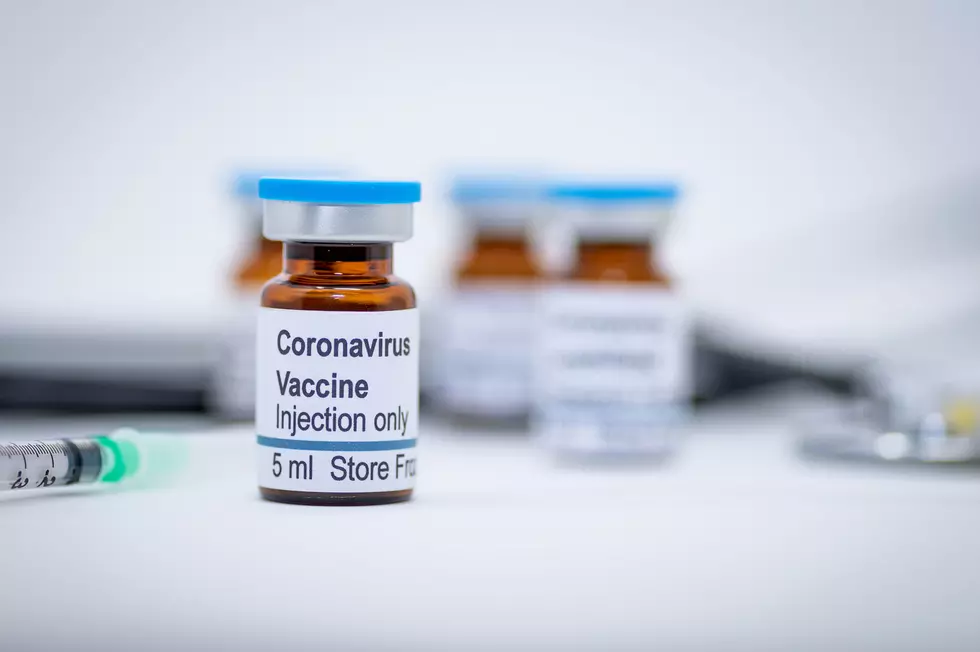
Indiana Teachers and School Staff Members Can Get Vaccinated Anywhere Starting March 15th
Less than one week after announcing teachers across the Hoosier state were eligible to schedule a COVID vaccine appointment at Walmart, Meijer, or Kroger pharmacies, the state Department of Health announces those individuals and other school staff members can now schedule their appointment at any vaccination clinic in their area beginning Monday, March 15th.
The announcement was made by the Department's Chief Medical Officer, Dr. Lindsay Weaver during Governor Eric Holcomb's weekly live stream update Wednesday afternoon (March 10th, 2021).
According to Dr. Weaver, the expansion was made "per direction of the White House," and includes teachers as well as "classroom aides, bus drivers, janitors, counselors, administrative staff, cafeteria workers, and substitute teachers" in grades Pre-K through High School. The list also includes those who work at "childcare centers, Head Start and Early Start programs," and "licensed child care providers including center-based and family care providers."
Shortly after the announcement was made, the Indiana State Teachers Association happily shared the news on Facebook:
If you or someone you know falls into one of the categories listed above, schedule your appointment through the Health Department's vaccination website, ourshot.in.gov, or by calling 211.*
*Please note, you will not be eligible to schedule through the state's website until Monday, March 15th when it will presumably be updated to include school staff members. As of this writing (Wednesday, March 10th), the site is still only allowing healthcare workers, first-responders, and those 50-years-old and older to register for an appointment.
Dr. Weaver also announced an expansion of vaccinations to individuals with the following conditions:
- Intellectual and Developmentally Disabled individuals receiving home/community-based services.
- Early childhood conditions that are carried into adulthood:
- Cystic fibrosis
- Muscular dystrophy
- People born with severe heart defects, requiring specialized medical care.
- People with severe type 1 diabetes, who have been hospitalized in the past year.
- Phenylketonuria (PKU), Tay-Sachs, and other rare, inherited metabolic disorders.
- Epilepsy with continuing seizures, hydrocephaly, microcephaly and other severe neurologic disorders
- People with severe asthma who have been hospitalized for this in the past year
- Alpha and beta thalassemia
- Spina bifida
- Cerebral palsy
- People who require supplemental oxygen and/or tracheostomy
- Pulmonary fibrosis, Alpha-1 Antitrypsin
- Immunocompromised state (weakened immune system) from blood or bone marrow transplant, immune deficiencies, combined primary immunodeficiency disorder, HIV, daily use of corticosteroids, use of other immune weakening medicines, receiving tumor necrosis factor-alpha blocker or rituximab.
People who qualify under any of those categories will receive a "unique link from the Indiana Department of Health" to sign up for their vaccine.
Dr. Weaver went on to say that once all the above individuals become eligible, the state will look to expand the age range incrementally to those 40 to 49 "as quickly as supplies will permit."
You can watch the Governor's entire update in the video below.
[Source: Governor Eric Holcomb on Facebook / Indiana Department of Health]
LOOK: Answers to 30 common COVID-19 vaccine questions
While much is still unknown about the coronavirus and the future, what is known is that the currently available vaccines have gone through all three trial phases and are safe and effective. It will be necessary for as many Americans as possible to be vaccinated in order to finally return to some level of pre-pandemic normalcy, and hopefully these 30 answers provided here will help readers get vaccinated as soon they are able.
READ ON: See the States Where People Live the Longest
More From WDKS-FM









